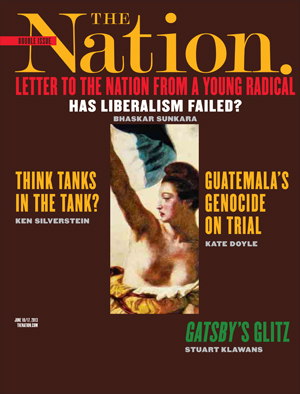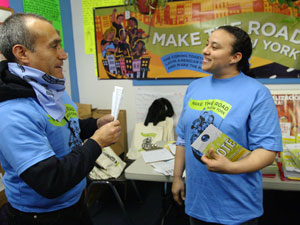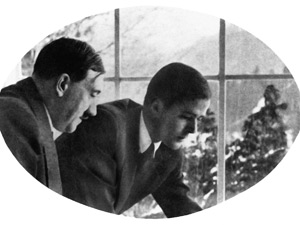Lynched and Abandoned
Peterborough, N.H.
I was startled that in her otherwise heartfelt and astute reflection on the case of the Central Park Five [“Diary of a Mad Law Professor,” May 6], Patricia Williams neglected to mention Joan Didion’s exhaustive 1990 New York Review of Books essay on the crime, the trial, the city. From the “abstraction” of the victim to the “swirl of collateral news,” Didion dissected the improbabilities of the commentary and the case. Interestingly, in subsequent discussions of this case, Didion is rarely mentioned. Is this because she is not, to use Williams’s formulation for neglected skeptics, “poor and black and relentlessly mocked in the media as deluded apologists”?
C.K. DORESKI
Amherst, Mass.
Patricia Williams wonders in “Lessons From the Central Park Five” if the film of that name “would be having the same reception had a black filmmaker made it,” as opposed to Ken Burns et al. The beauty of the film is that Burns lets the boys (now men) tell their story; Burns doesn’t do the telling. The same can be said of Burns’s Jazz. There were complaints from the black community that that movie, too, was made by a white filmmaker, but the musicians told their own story. Both stories were sitting there waiting to be told. Burns let it happen.
FAYTHE TURNER
Williams Replies
Seattle
My primary concern is what it takes, first, for a narrator to be heard and, second, to be heard as credible. It is true that Joan Didion’s excellent essay has enjoyed renewed attention since the PBS debut of Ken Burns’s The Central Park Five. At the time it was published, however, it was roundly denounced by readers of The New York Review of Books, who decried it in outraged, even vitriolic terms. But at least Didion had the power to get it published; and her literary virtuosity has ensured that it endures in collective memory, if underappreciated. If an artist like Didion faced such resistance to being heard about this case, what chance did the young defendants and their families have?
Furthermore, I vehemently disagree that Burns “doesn’t do the telling.” His great gift is precisely in piecing narratives together beautifully and compellingly and so seamlessly that his skilled editing becomes all but invisible. That said, this was not a story “waiting to be told.” It has and had been told over and over and over—in the courts, in the media, in the streets, in the men’s nearly unremarked exoneration in 2002, as well as in Sarah Burns’s well-reviewed but generally unread book. So Ken Burns didn’t “let the stories be told”; he deployed his exceptional craft to let them be heard, and heard as credible. Burns is undoubtedly one of the best filmmakers who ever lived. But it should not require such a rarefied combination of artistry and (yes, race-gender-class) power to convince citizens to take note of what goes on in the name of our justice system.
Bottom line: this is about real-life results, not the Oscars; and as of today, the City of New York continues to block, resist, drag out and refuse to settle a lawsuit filed by the five young men, as long ago as 2003, for wrongful prosecution.
PATRICIA J. WILLIAMS
Vanishing New York
Hartford, Conn.
I loved “The Gilded City,” your special issue on New York. As a New Yorker, I am biased, but I like to think the articles provide a historical picture that is really important for those who are nostalgic about the city as well as those who don’t know much about it. I grew up in Borough Park, went to neighborhood public schools (of course), took the bus to the public library on Thirteenth Avenue and the subway into Manhattan, even when I was young (we were very safe and independent), and graduated from Brooklyn College in the 1950s. My folks were immigrants from Russia and Poland and became very assimilated (my dad was a neighborhood air-raid warden in World War II). We were a blue-collar union family and always voted Democratic. I think my family was pretty typical. Times have changed enormously in New York City; that’s why it is particularly important to think historically. Thanks.
MARCIA BOK
Bronx, N.Y.
I have seen in the Bronx that the gentrification described in your issue is pushing the poor north to upstate towns, where rents are much lower. And now these communities are experiencing some of the problems seen here in the 1970s and ’80s, especially the spike in violent crime.
As a New Yorker, I am delighted that through my government employment program I can travel on public transportation for a dollar a trip and, through the local bus transfer system, as far as Rockland County, southern Connecticut and eastern Long Island for a little more; that I can attend great theater for $9 through the Theater Development Fund; that I can avail myself of free exercise classes, summer concerts and movies through the Parks Department; that I can attend free classical music recitals at the Mannes School or Juilliard; that I can read any book, delivered directly to my neighborhood library, through the public library system; and that I can pay less than $600 “maintenance” (rent) in a well-maintained, safe building in a Mitchell Lama co-op, provided I have the $15,000 deposit (which will be returned plus interest when I vacate).
It grieves me, however, that those who truly need these free and low-cost amenities cannot afford to live in this incredible city and take advantage of them.
SHARON BETH LONG
Burp
Rochester, N.Y.
I commend Nation art critic Barry Schwabsky for his recent article “Sugar Rush and Stomachache” [May 6]. Sometimes when I read other art critics writing about the New Museum, I wonder whether we actually saw the same show! Barry is not afraid of observing the critic observing the art, therefore humanizing the experience. Not surprising was his annoyance at the lack of abstract painting (in “NYC 1993” at the New Museum), since he has so eloquently written about the art form in his books and articles. I always look forward to what he has to say.
ALAN SINGER
Launch a War; Win an Election
Ottawa
Alone amid the media hype, Maria Margaronis, in “Thatcherism Triumphant” [April 29], mentioned the sinking of the Belgrano—outside the exclusion zone, moving away from the Falklands toward the Argentine mainland. This event also sank any hope of a negotiated settlement, ensuring that there would be war, and won an election for Margaret Thatcher. It was either a war crime or an act of terrorism. Government officials have been hanged for less.
JORDAN BISHOP Read More
Our Readers and Patricia J. Williams











